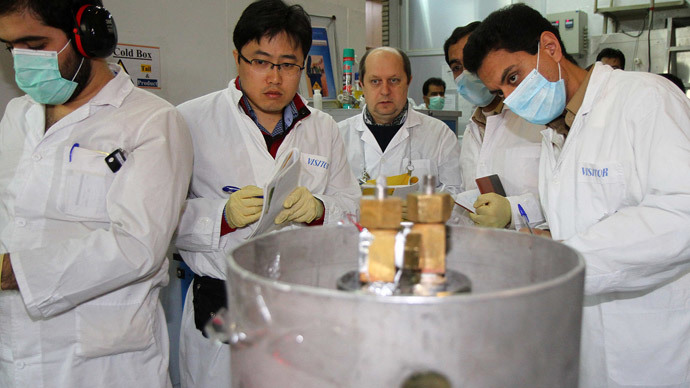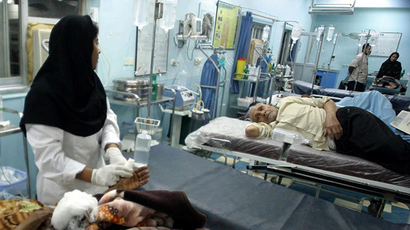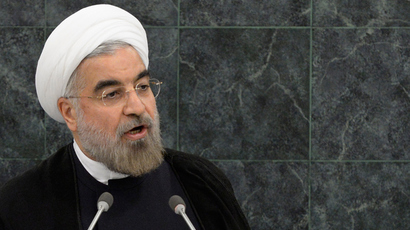Iran fulfilling most of its agreements under nuclear deal – IAEA

A monthly update by the IAEA says that Iran has cut its most sensitive stockpile of nuclear material by 75 percent, following a landmark deal agreed with world powers last year. However, a planned facility required as part of the pact has been delayed.
A monthly update by the IAEA says that Iran has cut its most sensitive stockpile of nuclear material by 75 percent, following a landmark deal agreed with world powers last year. However, a planned facility required as part of the pact has been delayed.
The monthly update from the International Atomic Energy Agency (IAEA) in Vienna indicates that so far, Iran is fulfilling its side of the bargain to curb its nuclear program. The conditions of the deal were agreed with the US, Russia, France, Germany, Britain, and China on November 24, Reuters reported.
In return, Iran is gaining more access to blocked overseas funds. Japan has made two payments totaling US$1 billion, and South Korea has also made a payment for Iranian crude oil.
Following the report, the US has moved to release $450 million of frozen Iranian funds.
The breakthrough agreement brokered last November came into effect on January 20 and is designed to move towards a permanent settlement of what is now a 10-year-old dispute regarding the intentions of Iran's nuclear program. Western countries fear Iran is developing the technology to build an atomic bomb. However, Iran insists its nuclear activities are for purely peaceful purposes.
As part of the deal, Iran will hold rolling talks with the six world powers until a final agreement is reached. Those talks began in February and the next round is due to be held on May 13 in Vienna.
The update from the IAEA shows that the Iranians have diluted half of their higher-grade enriched uranium reserve to a fissile content, from which they are less able to make fuel for a nuclear bomb.
Over the past three months, Iran has either diluted or begun the conversion process of almost 155 kg of higher-grade uranium gas, which amounted to 209 kg when the deal was agreed.
Tehran has also continued the conversion of uranium gas which had been refined to a 20 percent fissile purity into oxide for nuclear fuel. Twenty percent fissile purity is a short technical stage below the 90 percent purity needed for weapons-grade material.
However, Iran has delayed the construction of a facility to turn low-enriched uranium gas (LEU) into oxide powder which cannot be further processed into highly-enriched weapons-grade uranium.
Thursday’s IAEA report did not give a reason for the delay, but Iran had stated that the facility would be commissioned on April 9, with operations to begin soon after.
The delay means that Iran’s stockpile of low-enriched uranium gas is almost certainly increasing, as its production has not stopped.
However, experts and diplomats say the issue is of no concern, as Iran's commitment is to reduce its stockpile towards the end of the deal’s time frame in late July – so there is still time to complete the plant and convert the stockpile. They also said that they are closely monitoring Iran’s progress on building the conversion line.














